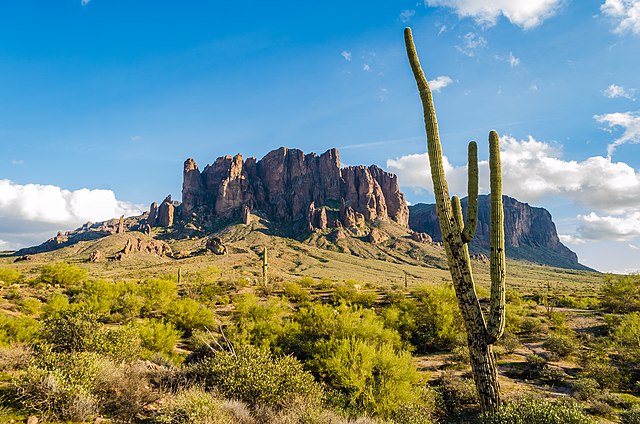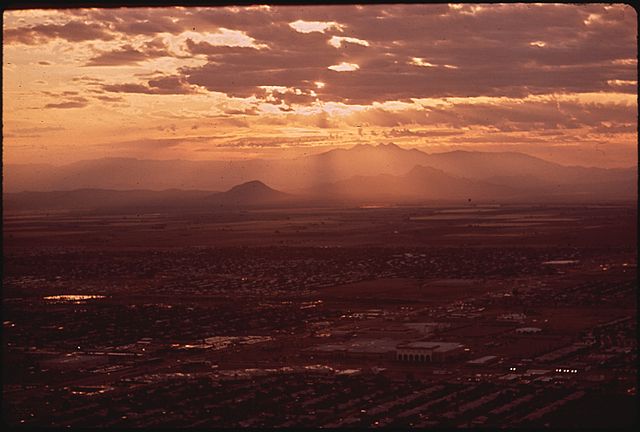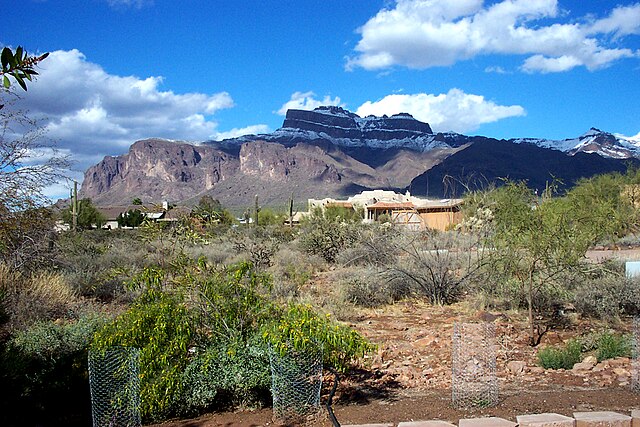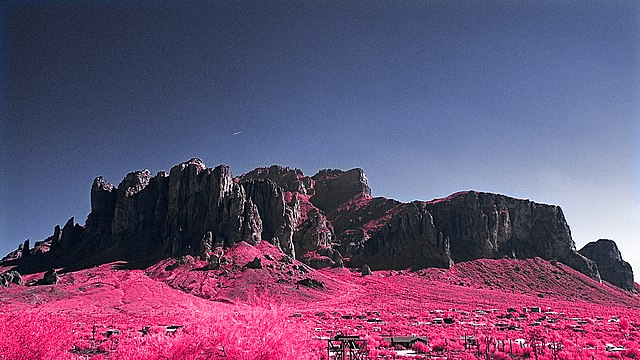Ever heard of a place where legends whisper through the canyons, and every trail feels like a step into a wild, untamed mystery? That’s the Superstition Mountains for you—a rugged, breathtaking range just east of Phoenix, Arizona, that’s been captivating adventurers, treasure hunters, and curious souls for centuries. Whether you’re chasing the thrill of a challenging hike, unraveling the enigma of the Lost Dutchman’s Gold Mine, or simply soaking in jaw-dropping desert views, this place has something for everyone. Let’s dive into the top 10 adventures waiting for you in the Superstition Mountains in 2025, and trust me, you’ll want to pack your hiking boots and a sense of wonder!
Why Visit the Superstition Mountains?
Picture this: golden spires piercing the desert sky, saguaro cacti standing like silent sentinels, and a landscape so dramatic it feels like it’s straight out of an old Western movie. The Superstition Mountains aren’t just a pretty backdrop; they’re a playground for outdoor enthusiasts and a treasure trove of history and lore. Spanning 160,200 acres of the Tonto National Forest, this federally designated Superstition Wilderness Area offers over 140 miles of trails, from leisurely strolls to heart-pounding climbs. But it’s not just about the trails—what makes this place special is its mystique. Legends of lost gold, Apache spirits, and unexplained disappearances add a layer of intrigue that makes every step feel like an adventure into the unknown.
The Legend of the Lost Dutchman’s Gold Mine
Have you ever dreamed of stumbling upon a hidden treasure? The Superstition Mountains are synonymous with the legend of the Lost Dutchman’s Gold Mine, a tale that’s been luring fortune seekers since the 19th century. The story goes that Jacob Waltz, a German immigrant, discovered a massive gold deposit in the 1800s but took its location to his grave in 1891. Since then, countless treasure hunters have scoured the rugged terrain, following cryptic clues and hand-drawn maps, only to come up empty-handed—or not come back at all. Some say the mine is cursed, protected by the spirits of the Apache who revered these mountains as sacred. Whether you believe in the gold or not, the legend adds a thrilling edge to any visit.
Is the Gold Real?
Here’s the million-dollar question: does the Lost Dutchman’s Gold Mine actually exist? Some historians argue Waltz might have fabricated the story to cover up gold he stole from another mine. Others point to the Peralta Stones, a set of mysterious carved tablets that supposedly map the mine’s location, as evidence of its reality. While no one’s found the mother lode yet, the hunt itself is an adventure. Imagine hiking through jagged canyons, half-expecting to spot a glint of gold among the rocks. Even if you don’t find treasure, the stories you’ll tell are worth their weight in gold!
Top Hiking Trails to Explore

If there’s one thing the Superstition Mountains do better than anywhere else, it’s hiking. With trails ranging from beginner-friendly to “why did I sign up for this?” levels of difficulty, there’s a path for every adventurer. The desert climate means you’ll need to plan carefully—think early mornings, plenty of water, and sun protection—but the rewards are worth it. Let’s explore some of the must-do trails that’ll have you falling in love with this rugged landscape.
Peralta Trail: A Scenic Gem
Looking for a hike that balances stunning views with a moderate challenge? The Peralta Trail is your go-to. This 12.4-mile round-trip trek takes you through Peralta Canyon to Fremont Saddle, where you’re greeted with a postcard-perfect view of Weavers Needle, a towering rock formation tied to the Lost Dutchman legend. The trail winds through cactus-dotted slopes and rocky terrain, offering glimpses of desert wildlife like jackrabbits and hawks. It’s a favorite for a reason—just don’t forget your camera!
Siphon Draw Trail to Flatiron
Ready to test your mettle? The Siphon Draw Trail to Flatiron is a beast of a hike, climbing 2,600 feet over 5.5 miles to a plateau with panoramic views that’ll make your jaw drop. It’s not for the faint of heart—think steep scrambles and rocky terrain—but reaching the top feels like conquering a mountain fortress. The trailhead starts at Lost Dutchman State Park, and if you time it right, you might catch a fiery desert sunset that paints the sky in hues of orange and pink.
Tips for Hiking Flatiron
Before you tackle Flatiron, a few pro tips: start at dawn to beat the heat, bring at least three liters of water, and wear sturdy shoes with good grip. The trail can be slippery, especially after rain, and navigation gets tricky near the top. A GPS app like AllTrails can be a lifesaver. Oh, and keep an eye out for petroglyphs—ancient rock carvings that hint at the area’s rich Native American history.
Camping Under the Stars
Want to feel like a true desert explorer? Camping in the Superstition Mountains is an experience you won’t forget. Lost Dutchman State Park offers developed campsites with amenities like restrooms and showers, perfect for families or first-timers. For the hardcore adventurers, backcountry camping in the Superstition Wilderness lets you pitch a tent under a blanket of stars, surrounded by the eerie silence of the desert. Just be prepared for chilly nights and the occasional howl of a coyote—it’s all part of the charm!
Best Camping Spots
One standout spot is the First Water Trailhead, where you can hike a short distance to set up camp near seasonal creeks. Another gem is the Reavis Ranch Trail, a longer trek that leads to a secluded valley once home to a historic ranch. Both offer solitude and stunning views, but you’ll need a permit for backcountry camping, so plan ahead. Pro tip: check for wildfire restrictions, as the desert can be tinder-dry in summer.
Exploring Native American History
The Superstition Mountains aren’t just a natural wonder—they’re a cultural treasure. For thousands of years, the Apache and Yavapai peoples called this range home, weaving it into their spiritual traditions. They believed the mountains were a gateway to the underworld, a place where spirits dwelled and thunder gods roared. Petroglyphs and ancient ruins scattered throughout the range tell stories of a vibrant past, and visiting these sites feels like stepping into a living history book.
C升高
One of the best places to connect with this history is Circlestone, a remote site featuring ancient stone structures believed to be ceremonial. Getting there requires a challenging hike, but the reward is a glimpse into a world long gone. Local guides can lead you to petroglyph sites, where carvings of animals and symbols etched into the rock spark the imagination. It’s a humbling reminder of the deep connection between the land and its original inhabitants.
Wildlife and Flora of the Sonoran Desert

The Superstition Mountains sit in the heart of the Sonoran Desert, a surprisingly vibrant ecosystem. Saguaro cacti, with their iconic arms, dot the landscape like sentries, while prickly pear and cholla add bursts of color. Wildlife is just as diverse—bighorn sheep, coyotes, and roadrunners might cross your path, and if you’re lucky, you might spot a Gila monster, a rare venomous lizard. Spring brings wildflower blooms, turning the desert into a canvas of purples, yellows, and reds.
Wildlife Watching Tips
Want to maximize your wildlife sightings? Early morning or late afternoon hikes increase your chances of spotting animals before they seek shade. Binoculars are a must for birdwatching—hawks and vultures soar above the canyons. And a word of caution: rattlesnakes are common, so stick to the trails and watch your step. The desert’s beauty comes with a bit of bite!
The Thrill of Rock Climbing
For adrenaline junkies, the Superstition Mountains offer world-class rock climbing. Weavers Needle, a 1,000-foot volcanic spire, is a bucket-list climb for experienced mountaineers. Its sheer faces and challenging routes demand skill and nerve, but the views from the top are unmatched. For beginners, Miners Needle offers more accessible routes with equally stunning vistas. Local outfitters provide guided climbs and gear rentals, so you don’t need to be a pro to give it a try.
Visiting the Superstition Mountain Museum
Want to dive deeper into the lore? The Superstition Mountain Museum on the Apache Trail is a must-visit. Exhibits showcase artifacts from the Lost Dutchman legend, Native American history, and the area’s mining past. You’ll find maps, tools, and even a replica of Waltz’s deathbed where he whispered the mine’s location. The museum also offers guided tours and storytelling sessions that bring the mountains’ mysteries to life.
Photography and Scenic Drives
Calling all shutterbugs! The Superstition Mountains are a photographer’s paradise, with dramatic rock formations, vibrant sunsets, and endless desert vistas. The Apache Trail (State Route 88) is a scenic drive that winds through the range, offering pullouts for jaw-dropping photo ops. Tortilla Flat, a quirky ghost town along the trail, has a saloon and gift shop perfect for a mid-drive break. Just note that parts of the trail are unpaved and narrow, so a sturdy vehicle is a good idea.
Planning Your Trip: Best Time to Visit</h?
Timing is everything in the Superstition Mountains. The cooler months from October to April are ideal for hiking and camping, with temperatures ranging from 60°F to 80°F. Summer can hit 100°F or more, making early morning or evening activities a must. Spring wildflower blooms are a bonus, but check weather forecasts for flash flood warnings—monsoons can turn dry washes into raging rivers in minutes.
Packing Essentials
Ready to hit the trails? Pack light but smart. Essentials include a wide-brimmed hat, sunscreen, sturdy hiking boots, and a reusable water bottle (at least two liters per person). A first-aid kit, trail map, and GPS device are crucial for safety. Snacks like trail mix or energy bars keep you fueled, and a lightweight jacket is handy for chilly desert nights. Oh, and don’t forget a camera—you’ll want to capture every moment!
Safety Tips for Your Adventure
The Superstition Mountains are wild and unforgiving, so safety comes first. Tell someone your plans and expected return time. Stick to marked trails to avoid getting lost—some hikers have needed helicopter rescues after straying off-path. Watch for signs of dehydration or heatstroke, like dizziness or nausea, and take breaks in the shade. If you hear thunder, head to lower ground to avoid lightning strikes. The mountains are magical, but they demand respect.
Local Culture and Events
The towns around the Superstition Mountains, like Apache Junction and Goldfield, are steeped in Old West charm. Annual events like the Lost Dutchman Days festival in February feature rodeos, parades, and gold-panning contests that bring the area’s history to life. Local diners serve up hearty Southwestern fare—think chili con carne and prickly pear margaritas—that’ll fuel your adventures and give you a taste of Arizona’s culture.
Sustainable Travel in the Superstitions

Love the land? Leave it better than you found it. Stick to Leave No Trace principles: pack out all trash, avoid disturbing wildlife, and stay on designated trails to protect fragile desert ecosystems. Support local businesses like the Superstition Mountain Museum or Tortilla Flat’s saloon to keep the community thriving. By treading lightly, you ensure this wild wonderland stays pristine for future adventurers.
Conclusion
The Superstition Mountains are more than a destination—they’re a journey into the heart of Arizona’s wild spirit. From heart-pounding hikes to haunting legends, this rugged range offers adventures that linger in your memory long after you’ve left. Whether you’re scaling Weavers Needle, camping under a starlit sky, or chasing the ghost of the Lost Dutchman’s gold, every moment here feels like a story waiting to be told. So, what are you waiting for? Grab your gear, hit the trails, and let the Superstition Mountains cast their spell on you. Your next great adventure is calling!
FAQs
1. What’s the best trail for beginners in the Superstition Mountains?
The Native Plant Trail at Lost Dutchman State Park is perfect for beginners. It’s a short, easy loop with interpretive signs about desert flora, offering great views without the intensity of longer trails.
2. Is it safe to hike alone in the Superstition Mountains?
Solo hiking is possible but not recommended unless you’re experienced. Always tell someone your plans, carry a map or GPS, and stick to marked trails to avoid getting lost or injured.
3. Can I visit the Superstition Mountains year-round?
Yes, but October to April is best due to cooler temperatures. Summer hikes are possible but require early starts and extra water to beat the heat.
4. Are there guided tours available in the Superstition Mountains?
Absolutely! Local outfitters offer guided hikes, rock climbing trips, and historical tours, especially around the Lost Dutchman legend. Check with the Superstition Mountain Museum for options.
5. What’s the deal with the Lost Dutchman’s Gold Mine?
It’s a legendary gold mine supposedly found by Jacob Waltz in the 1800s. Its location remains a mystery, fueling treasure hunts and tales of curses. Visit the Superstition Mountain Museum to learn more!

